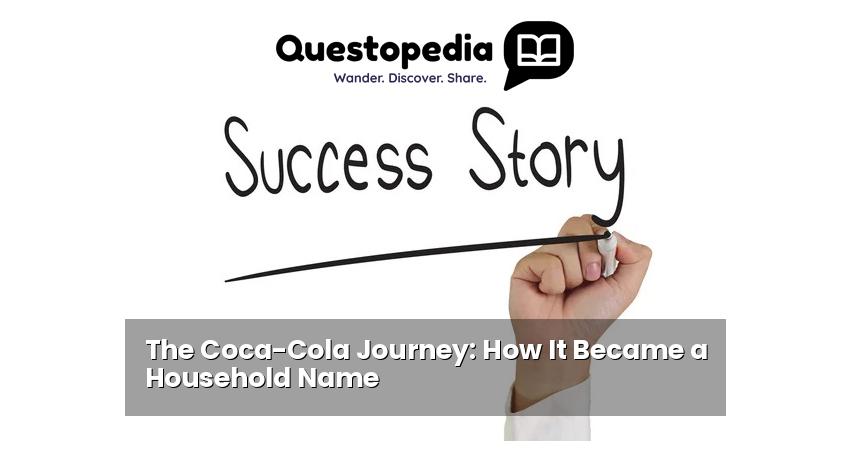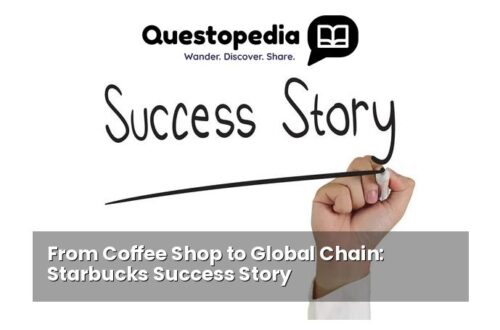The Coca-Cola Journey: How It Became a Household Name
Coca-Cola, instantly recognizable by its iconic bottle and refreshing taste, is more than just a beverage. It’s a cultural phenomenon, a symbol of Americana, and a testament to the power of effective marketing and enduring branding. But how did this once-humble syrup, initially marketed as a brain tonic, become the global household name it is today? Let’s delve into the fascinating journey of Coca-Cola, exploring the key ingredients of its success.
The Birth of an Icon: From Syrup to Soda
In 1886, John Pemberton, an Atlanta pharmacist, concocted a syrup in his backyard, aiming to create a medicinal beverage. He mixed this syrup with carbonated water, and the drink was first sold at Jacob’s Pharmacy for five cents a glass. Pemberton’s bookkeeper, Frank M. Robinson, is credited with naming the drink “Coca-Cola” and designing the distinctive Spencerian script logo that remains largely unchanged today. This early branding established an immediate visual identity.
Interestingly, the original formula contained trace amounts of cocaine, derived from the coca leaf. This ingredient was removed in the early 1900s, addressing concerns about its potential addictive properties. You can find more information about the history of Coca-Cola on sites like The Coca-Cola Company’s official website.
Asa Griggs Candler and the Rise of Mass Marketing
Pemberton, struggling with his own health and finances, gradually sold the rights to Coca-Cola to various parties. In 1888, Asa Griggs Candler, a shrewd businessman, acquired complete control of the Coca-Cola Company. Candler’s vision was to transform Coca-Cola from a local remedy into a national beverage. He implemented aggressive marketing strategies, including:
- Distribution and Sampling: Candler liberally distributed free Coca-Cola coupons and samples to entice potential customers.
- Advertising: He invested heavily in advertising, placing Coca-Cola ads in newspapers, magazines, and on billboards across the country.
- Memorabilia: Candler created and distributed branded merchandise, such as calendars, clocks, and serving trays, further solidifying the Coca-Cola brand in the public consciousness.
His innovative approaches transformed the company and set the stage for its future global expansion. This is also how companies like Questopedia, strive for providing knowledge to everyone.
The Iconic Bottle: A Defining Moment
Early Coca-Cola was often sold in generic, straight-sided bottles. This led to imitation and confusion among consumers. In 1915, the Coca-Cola Company launched a competition to design a distinctive bottle that would be instantly recognizable, even in the dark. The winning design, by the Root Glass Company, was inspired by the shape of the coca bean. This contoured bottle, patented in 1916, became a powerful symbol of Coca-Cola, further distinguishing it from competitors and contributing significantly to its brand recognition.
Expansion Beyond Borders: Globalization and Cultural Integration
Coca-Cola’s global expansion began in the early 20th century, initially through bottling plants in Cuba and Panama. However, it was under the leadership of Robert Woodruff, who took over as president in 1923, that the company truly embraced international markets. Woodruff’s goal was to ensure that “Coca-Cola was within an arm’s reach of desire” worldwide. He established bottling plants and distribution networks across continents, adapting marketing strategies to suit local cultures and preferences. During World War II, Coca-Cola became a symbol of American values and was made readily available to American troops overseas, further cementing its global presence.
The company cleverly integrated itself into local cultures. For example, during the Olympics, Coca-Cola would often sponsor the games and create specific marketing campaigns that were targeted to local audiences. You can explore more about Coca-Cola’s impact on globalization in academic resources available through JSTOR.
Adapting to Changing Tastes: Innovation and Sustainability
While the classic Coca-Cola recipe remains a closely guarded secret, the company has continuously innovated and adapted to evolving consumer tastes and concerns. This includes:
- Diet Coke and Other Variants: The introduction of Diet Coke in 1982 catered to health-conscious consumers. Coca-Cola has since launched numerous other variations, including Coca-Cola Zero Sugar and flavored options.
- Sustainable Packaging: Recognizing the importance of environmental sustainability, Coca-Cola has invested heavily in developing more eco-friendly packaging options, including recycled plastic and plant-based bottles.
- Addressing Health Concerns: The company has responded to concerns about sugar consumption by offering lower-sugar and sugar-free alternatives.
These adaptations ensure that Coca-Cola remains relevant and appealing to a wide range of consumers in a changing world. This is how we also try to adapt in delivering quality information on Questopedia.
Conclusion: The Enduring Legacy of Coca-Cola
The Coca-Cola journey is a remarkable story of innovation, shrewd marketing, and cultural integration. From its humble beginnings as a medicinal syrup, Coca-Cola has transformed into a global icon, a household name recognized and enjoyed by billions. While the beverage industry is constantly evolving, Coca-Cola’s enduring brand strength, commitment to innovation, and ability to adapt to changing tastes suggest that it will remain a dominant force for generations to come.






